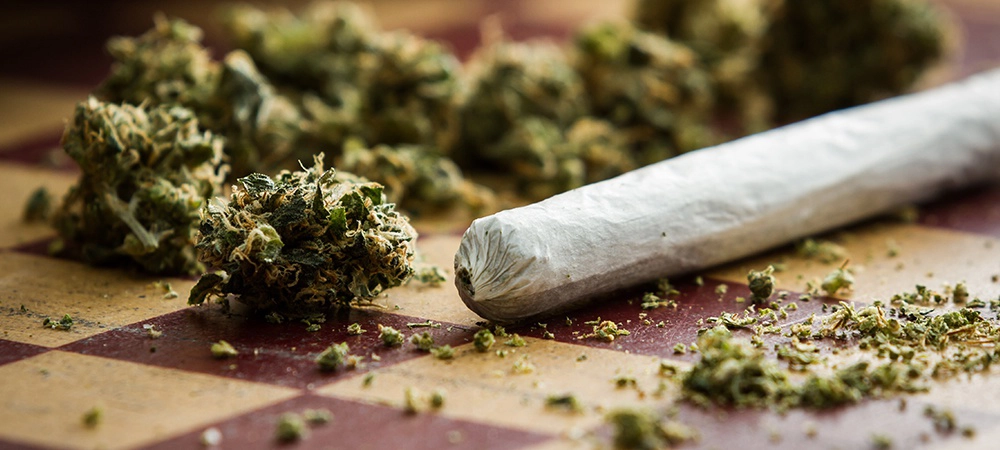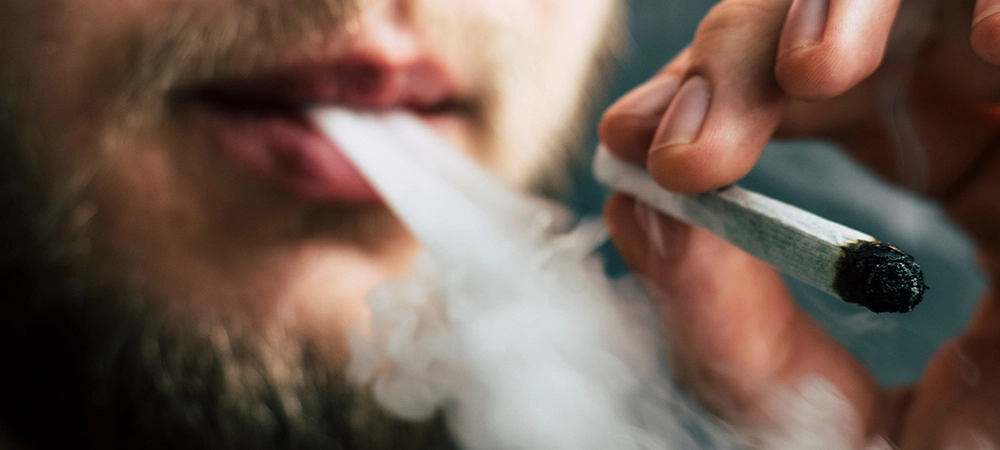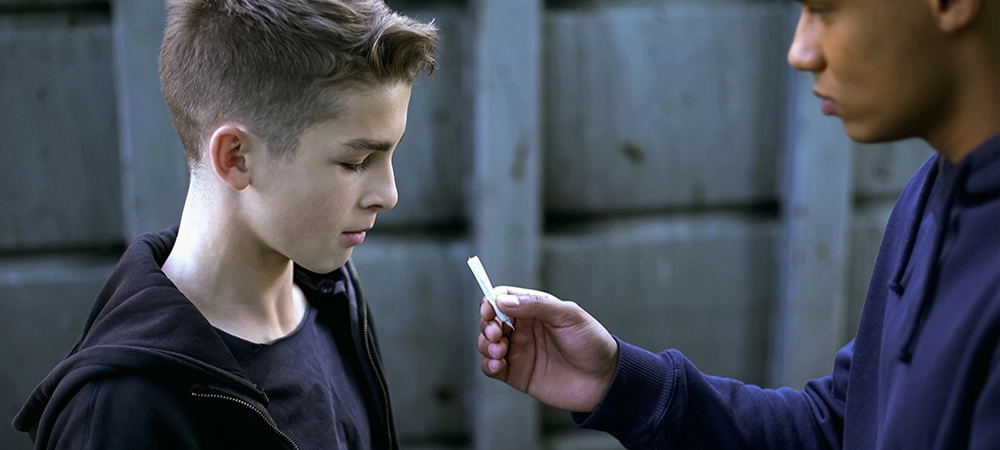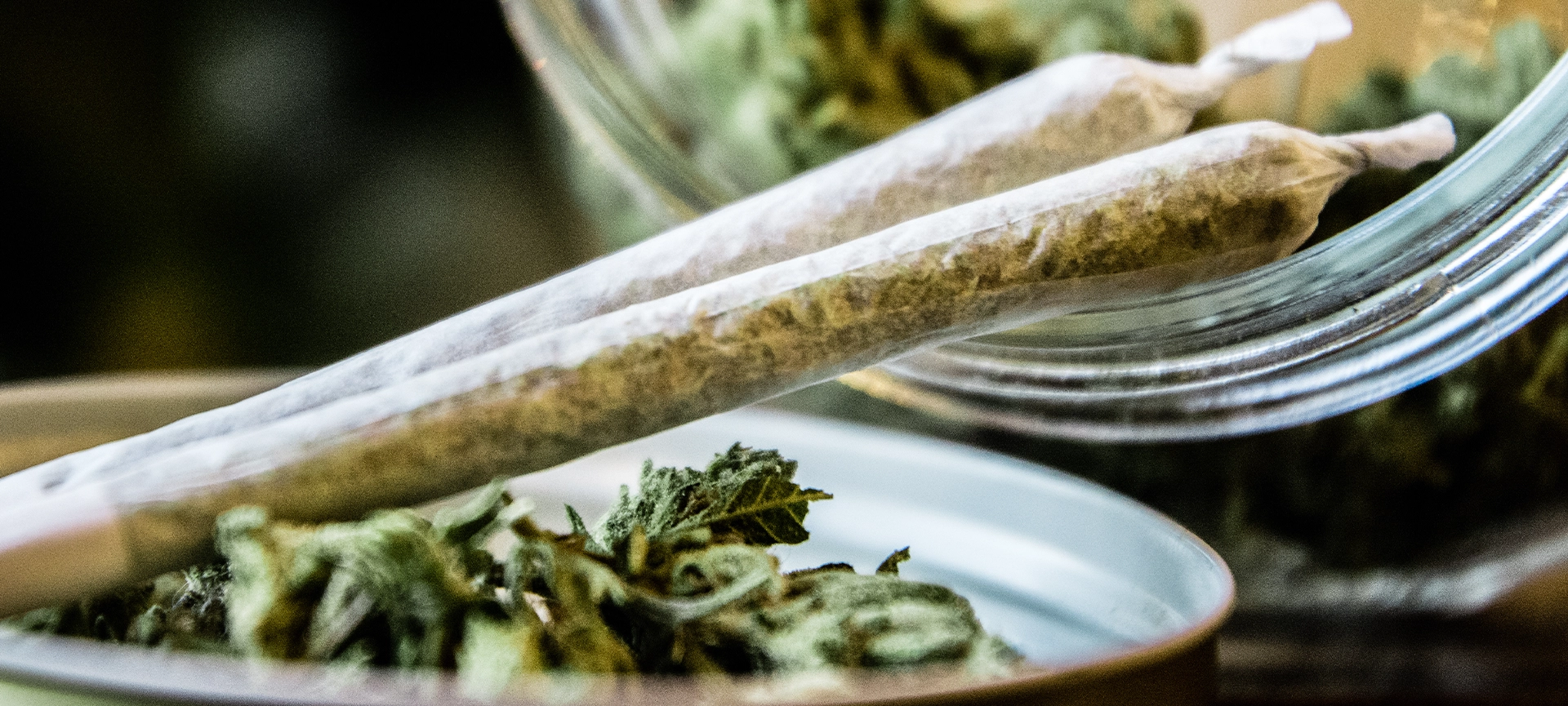The question of whether marijuana is addictive has been a matter of substantial debate for several years. Societal attitudes toward marijuana have undergone significant changes. What was once referred to as “the devil’s lettuce” is now regarded by some as harmless or even, in some cases, beneficial. Some people are convinced that it is impossible to become addicted to marijuana; others believe one can become addicted to anything.
In order to examine this subject fairly, we need to explore the question of what addiction is how it happens, and whether marijuana possesses the properties necessary to create an addiction.
What Is Addiction?
Addiction is a complex condition in which the individual engages in uncontrolled destructive behaviour over an extended period of time, in spite of harmful consequences. While it is important to acknowledge that addiction does not always involve substance abuse – examples of substance-free addictions include gambling and sex – for the purposes of this discussion, we will focus on addictions to substances like marijuana.
Nobody starts using a substance with the intention of becoming addicted. The primary reasons for using most substances – including marijuana – are as follows:
- Medical management of a physical or mental health condition
- Recreational use – for example, having a drink or consuming edibles at a party
- To increase energy or creativity, or improve performance on a particular task
- To relieve stress or anxiety, or to escape from problems
- To achieve a sense of euphoria or increased confidence, or to reduce social anxiety
Dopamine: The Natural High
It is that last element, the increased euphoria, that can present a problem. The euphoria comes from increased levels of dopamine, the “feel good” chemical that is produced by the brain. Dopamine is nature’s reward. When we engage in certain activities, like going for a walk on the beach, spending time with a friend, or getting lost in a hobby like art or dance, we are given a boost of dopamine to flood us with feelings of joy, peace, or confidence. Like most rewards, this one is designed to encourage us to repeat the behaviour.
Our dopamine levels rise and fall naturally throughout the day. We go for a run, and our brain releases dopamine to make us feel good. After the run is over, the dopamine gradually subsides to its baseline level. Then we get a phone call from a loved one, and that makes us happy. After the phone call is over, we slowly return to our original state.
When dopamine is artificially raised through the use of substances, it can be elevated to levels that exceed what would happen naturally. Using drugs or alcohol can quite literally make a person feel happier than they’ve ever been.
The very dangerous flip side of this is that when the drugs wear off, the dopamine levels don’t gradually return to baseline. They go into freefall, often crashing to levels below the original baseline.
All of us have, at some point, experienced abrupt changes to our mood. We know what it is like to have our happiness suddenly snatched away. This happens, for instance, when we receive news of a loved one’s death, or when we are involved in a car accident. Generally, the solution is time: time to grieve the lost loved one, or time to recover from the shock of the accident.
For people who have experienced this crash due to drug-induced dopamine wearing off, the solution is often to seek out more of the drug. There is a very real desperation to escape the feelings of depression, anxiety, or confusion and reclaim the euphoria or confidence that was there so recently. And when the individual consumes more of the drug, they frequently have to use it in higher doses to achieve that effect.
We refer to this as tolerance: the higher your level of tolerance for a substance, the more of it you have to use to get the effects you are looking for. It is worth noting that not all substances increase tolerance for all people. Most people can use prescription painkillers as prescribed to block the pain receptors in the brain, without relying on the dopamine boost that comes with them. They can do this using the same dose for the duration of the prescription. The majority of people who consume alcohol can stop at just one or two drinks.
From Tolerance To Dependence
Those who do develop a tolerance to the substance they’re using face another problem. Substances change the way our bodies behave. Sometimes they elevate or lower the heart rate or make us breathe more quickly or more slowly. Sometimes the way in which we digest food is impacted. Substances can affect our cognition, our coordination, and our metabolism.
The human body is nothing if not adaptable, and so it starts to compensate for the presence of substances that are ingested regularly. In other words, your body’s organs and systems get “used to” the substance being there. What this means is that when you try to stop using the substance, your body – and sometimes your mind – cannot cope with the deprivation. You start to feel withdrawal symptoms that range from mildly uncomfortable to potentially fatal, depending on the substance.
The obvious solution to this is to use the substance again, to get the body back to its new baseline – a baseline that is putting tremendous strain on your organs and systems. Many people end up in a situation where it is dangerous to continue using the substance, but it is dangerous to stop.
Does This Happen With Marijuana?
Anyone doing a simple Google search will see arguments supporting and opposing the notion of marijuana being addictive. Opinions are varied: some people believe that marijuana creates tolerance and dependencies just like many other substances, others are of the opinion that while not technically addictive, marijuana acts as a “gateway drug”, and others feel that it is completely harmless – or in some cases, actually beneficial.
As with many questions that seem simple, the answer to this one is fairly complex, largely because marijuana itself is a complex substance.
What Is Marijuana?
Weed, dope, pot, devil’s lettuce. Marijuana is known by many names. It is one of the oldest and most widely used substances in many parts of the world. Historically, marijuana – or cannabis, as many people refer to it – has been cultivated and used for medicinal and recreational purposes. Over the centuries, hundreds of strains have been created, and many have died out to make way for new ones. The plethora of marijuana strains is what makes this drug so complex: each strain has its own properties, effects, and purposes.
The primary factor that distinguishes one strain of marijuana from the next is the concentration of cannabinoids.

What Are Cannabinoids?
Most strains of cannabis plants contain over 500 chemical substances called cannabinoids. Two of these are primarily responsible for the effects that marijuana produces in those who consume it.
Tetrahydrocannabinol
Tetrahydrocannabinol (THC) is the compound in marijuana that is primarily associated with people getting “high”. It attaches to the cannabinoid receptors in areas of the brain that are responsible for thinking, memory, coordination, and pleasure. Once these receptors are activated by THC, the individual experiences effects in these areas.
The ingestion of THC results in the release of dopamine, as described above. This results in short-lived euphoria and serenity, but it also has problematic effects such as tachycardia (rapid heart rate), impaired cognition, and delusions. However, some strains of marijuana include other cannabinoids such as terpenes, which can offset some of the negative effects.
Cannabidiol
Unlike THC, cannabidiol (CBD) does not have any psychoactive properties. In fact, high concentrations of CBD may, in some cases, reduce the impact of THC and effectively make the person get “less high”. Although CBD is highly concentrated in cannabis plants that are used for industrial hemp, it is also cultivated in many strains of marijuana for medicinal use.
When used improperly, CBD can result in nausea, fatigue, and irritability. Using it in high doses can lead to abnormal results in liver-related blood tests, a feature it has in common with many over-the-counter medications such as acetaminophen (Tylenol).
Different Strains For Different Purposes
There are approximately 779 known strains of marijuana, and there could be many more that are as yet undiscovered. The main factor that distinguishes them from one another is their concentrations of THC and CBD.
The marijuana strains are broadly divided into three categories.
Sativa strains
Sativa cannabis plants are tall and slender with light green skinny leaves. They are grown in warm, humid climes like South and Central America, and Southeast Asia. These strains are high in THC and low in CBD: this means they frequently produce the “high” associated with marijuana. They are therefore more commonly used for recreational purposes than the other strains.
While Sativa strains are popular for recreational use, they are often used for medical purposes as well. The reasons for medical use include the following:
- It boosts energy, focus, and creativity
- It helps ease the symptoms of depression
- It decreases nausea
- It can reduce the severity and frequency of headaches
- It helps combat loss of appetite
Indica strains
Indica plants are short and bushy with dark green broad leaves. Unlike the Sativa plants that thrive in humidity, Indica prefers the harsh dry climates of the Middle East. With roughly equal amounts of CBD and THC, these strains are not used much for recreational purposes. When used appropriately, they can provide medical relief for the following:
- Physical pain, especially in the muscles
- Nausea and decreased appetite
- Insomnia
- Anxiety
Hybrid strains
Hybrid strains are being developed all the time to combine THC, CBD, and other cannabinoids in varying configurations. Horticultural technology has evolved to the point where growers can fine-tune the strains they produce in highly specific ways. The resulting plants are designed to produce varying combinations of effects in a variety of intensities, while also reducing negative effects like tachycardia and impaired cognition.
What Does This Mean For Marijuana Addiction?
Because of the variety and complexity of marijuana, there is no simple answer to the question of whether it is addictive. Most studies that attempt to measure the prevalence of marijuana use disorders do not distinguish between addiction and dependence – although the two are closely intertwined, it is possible for one to exist without the other.
What does seem clear, though, is that the Sativa strains, with their higher concentrations of THC – the cannabinoid that boosts dopamine – have a higher connection with marijuana use disorders than the Indica strains. Some of the THC-concentrated hybrid strains can lead to dependence as well, though it should be noted that many growers are attempting to produce strains that do not create dependence.
One of the most telling indications of whether marijuana is addictive is the behaviour of the people who use it: in the United States in 2015, some 138,000 individuals voluntarily entered into addiction treatment programs for marijuana use.
And why wouldn’t certain strains of marijuana create a dependence? We know that THC artificially raises dopamine levels, and we know that when this happens on a regular basis, the baseline levels change. It stands to reason that when you stop using certain strains of marijuana, you may be prone to withdrawal symptoms as your brain and body are re-establishing natural baselines.
The withdrawal symptoms most commonly associated with marijuana include the following:
- Irritability and mood swings
- Difficulty falling or staying asleep
- Decreased appetite
- Restlessness
- Cravings for marijuana
- Muscle aches and pains, or overall physical discomfort.
These symptoms usually peak within a few days of the last use, and they last for up to two weeks.

Why Do So Many People Believe Marijuana Is Not Addictive?
In recent years, there has been a lot of back-and-forth debate over whether marijuana is addictive. On one extreme are the people who believe marijuana is every bit as bad as the “hard” drugs like heroin and cocaine. On the other extreme are people who believe that marijuana is nothing more than a healthy plant. Opinions on the subject run the gamut between the two extremes.
Few substances generate this debate. What is it about marijuana that makes it subject to so many varying opinions?
Not all withdrawal is dangerous
The fact that marijuana can be habit-forming is often overlooked simply because withdrawal symptoms are merely uncomfortable, but not actually dangerous. When we think of addiction, we tend to picture the delirium tremens that come with alcohol withdrawal or the violent shakes and chills that often accompany withdrawal from heroin. For some substances, withdrawal is so dangerous that it should not be attempted without close medical supervision.
Marijuana withdrawal is not like this. The individual may struggle to sleep for a few nights; they may feel irritable and achy. While the cravings they experience are very real, the person is not going to be at risk of serious illness or death from sudden marijuana deprivation. In fact, as of the time of this writing, there has never been a documented case of someone dying as a result of marijuana withdrawal.
The rise of medical marijuana
In addition, the use of marijuana for medical purposes has been growing steadily since the turn of the century. As the medicinal properties of the drug have been researched, and as new strains have been developed specifically to treat medical conditions, acceptance of marijuana as a medication has increased.
This has fuelled the belief that not only is marijuana not harmful, it is actually helpful. While there is some truth to this, it does come with a caveat: not all marijuana is medicine. Many strains do not provide any medical benefits at all. As with any other prescription medication, medical marijuana should be used only under the direction of a doctor. And just like other prescription medications, misuse can lead to dependence.
Breaking the law?
We have moved on from the days when marijuana was illegal everywhere. Today, recreational marijuana is legal in a handful of countries around the world, including Canada, and in almost half of the states in the USA. The use of medical marijuana is even more broadly permitted.
The fact that marijuana is becoming legal in more and more places is often taken as a sign that “it can’t be that bad”. Bear in mind, though, that other substances that are legal are also addictive, most notably cigarettes and alcohol.
Why Marijuana Should Be Used With Caution
Technically, marijuana is not as dangerous as a lot of other substances, especially when it comes to withdrawal. However, “not dangerous” does not equate to “harmless”. For some individuals, marijuana abuse can still pose long-term risks.
High Addictive Potential Of Some Strains
It is worth bearing in mind that while attitudes to marijuana have been evolving over the years, marijuana itself is not what it once was. In the early 1990s, marijuana samples that were confiscated and sent for laboratory analysis had a THC concentration of less than 4%. Thirty years later, some marijuana has a THC content of up to 15%. High-THC concentrates are even more potent. What this means is the addictive potential of marijuana could be much higher than people realize, depending not only on the strain of cannabis but on how it is prepared for consumption.
Smoking Risks Are Not Limited To Cigarettes
There is a misconception that marijuana is “not as bad” as cigarettes, but in reality, the two substances have many toxins and carcinogens in common. Therefore, many of the risks are the same, including bronchitis, excess mucous production, and some cancers. There may also be an increased risk of emphysema and chronic obstructive pulmonary disease (COPD), but research on this is still underway.
Age Does Matter
It is increasingly evident that long-term use of marijuana can have a significant effect on some areas of cognition, such as verbal memory. This risk is higher when the individual starts using marijuana as an adolescent. At this age, marijuana use can also lead to declines in memory, impulse control, and learning. A lot of research in this area is in progress, and it is complicated by the fact that many people who use marijuana – even adolescents – also use other substances, such as alcohol. It should be noted that the human brain is not fully developed until around 25 years of age: repeated exposure to mind-altering substances during these developmental stages is bound to create problems.

When A Brownie Is Not Just A Brownie
The legalization and increasing popularity of edibles in Canada creates a new risk: it is easier than ever before to suffer an accidental overdose. While there have been no reported cases of fatal overdose, people can experience symptoms severe enough to warrant a trip to the hospital. Marijuana overdose symptoms include extreme anxiety, panic attacks, a rapid heart rate, impaired speech and coordination, high or low blood pressure, nausea and vomiting, and extreme confusion. Some people may experience symptoms of psychosis, such as paranoia and hallucinations. It is essential to store cannabis edibles out of reach of children and pets.
Marijuana As A “Gateway Drug”
Many teenagers are warned against using marijuana on the grounds that it is a “gateway” drug that invariably leads the individual down a path of using other, more harmful substances. Is there merit to this, or is it a groundless fear?
While there are some observational studies that show a link between marijuana use and the use of other substances, it is worth remembering that correlation does not equal causation. When it comes to the use of alcohol and drugs other than marijuana, other factors could be at play. For instance, the reasons the individual started using marijuana could be the same reasons that the individual started using other substances: trauma, social isolation, difficult family circumstances, and so on.
Recent studies of substance use among young people do appear to demonstrate two things, though:
- Among adolescents, marijuana has started to replace alcohol and tobacco as the first substance used.
- Adolescents who smoke cigarettes are more likely to subsequently use marijuana.
While these studies did not delve into the use of substances after marijuana, a separate study in Vancouver showed that for some youth, regularly monitored cannabis use may have delayed or prevented the use of intravenous drugs.
Striving For A Connected Environment
Addiction to any substance – marijuana or otherwise – is deeply rooted in context. No one ever uses drugs or alcohol with the intention of becoming addicted. Addiction happens when someone discovers that the substance helps them escape from some kind of pain. This can take the form of physical pain, lack of sleep, depression, post-traumatic stress syndrome, high school bullying, and any number of other reasons.
From this, one might assume that people who have experienced trauma, a difficult family life, mental illness, or a major stressful life event are statistically more likely to become addicted to a substance like marijuana. To an extent, this is true, but there is one singular factor that is a major predictor of addiction: the presence or absence of connection.
Rat Park
Research studies done on rats have overwhelmingly shown that a rat placed into a cage containing both ordinary water and drug-laced water will always choose the drugs. Predictably, the rat will become addicted very quickly and ultimately die of an overdose.
In the 1970s, a researcher named Bruce Alexander tweaked this experiment using a cage he referred to as Rat Park. Rat Park contained the same choices as the original cages: ordinary water and drug-laced water. It also contained toys, mazes, and activities to keep the rats occupied. Most importantly, Rat Park contained other rats. The rats were free to interact with each other in whatever ways they chose.
Without exception, the rats in Rat Park chose water over drugs. Unlike the rats in isolation, these rats were socially connected and had positive outlets for their energy. Not a single rat died from an overdose.
These results have been replicated in the closest possible version of human form. In 2000, Portugal decriminalized all drugs, including marijuana. Money that had previously been used to prosecute drug-related offences was instead put into social programs. Within 15 years, addiction to all substances had declined significantly.
What Can We Learn From This?
Rat Park and the Portuguese experience are evidence that addiction is far less likely to happen in an environment where the individual is connected with those around them. Whether or not marijuana is a gateway drug is almost irrelevant: what is apparent is that the key to reducing marijuana use disorders and addictions to other substances is to ensure that people have those connections.
While there should be ongoing efforts at all levels of government to ensure that social programs and supports are available to those who need them, there are things that parents can do within the family unit to reduce the chances of substance abuse.
- Have ongoing discussions with your kids about the dangers of substance abuse. Encourage them to ask questions. If you don’t know the answers, explore the topic with your kids and learn along with them.
- Support your kids in their pursuit of healthy activities, such as sports, volunteering, music, or art. These activities are healthy in and of themselves, and they can help foster positive social connections.
- Adolescents are prone to peer pressure. Help them practice ways of saying “no” that they can use in social situations.
- Ensure that your kids know that if they are in an awkward social situation that puts them at risk, they can call on you to “rescue” them.
- Take your children’s concerns about their mental health seriously. If your teen seems moody or depressed or spends a lot of time on their own, don’t write it off as “being a teenager”. Consider the possibility that there are other factors at play. Even if your teenager doesn’t want to talk about it right away, let them know that you are there for them and ready to listen to them at any time.
- Set aside family time. Sure, your teenagers may protest and say it’s not “cool” for them to be spending time with their parents, but research bears out the idea that adolescents who are connected with their families are less likely to turn to marijuana or other substances.
- Familiarise yourself with the signs of marijuana abuse and substance abuse in general. The earlier your loved one gets help, the more likely they are to achieve long-term recovery.
Marijuana Use Disorder – What Are The Signs?
The Diagnostic and Statistical Manual of Mental Disorders 5th Edition (DSM-5 or DSM-V) stipulates that an individual may be diagnosed with cannabis use disorder if they display at least two of the following 11 symptoms in a 12-month period:
- Progressively increasing the amounts and frequency of marijuana use
- Neglecting social and recreational activities that were previously enjoyed
- Inability to stop using marijuana in spite of wanting to
- Continuing to use marijuana in spite of potentially dangerous consequences
- Experiencing cravings for marijuana after a period of abstinence
- Continuing to use marijuana in spite of a worsening physical or mental illness
- Inability to uphold work, school, or home responsibilities
- Needing higher doses of marijuana to achieve the desired effects
- Continuing to use marijuana in spite of it causing problems in relationships
- Experiencing withdrawal symptoms when attempting to stop use of marijuana
- Spending a lot of time, money, and energy obtaining or using marijuana, or recovering from its effects
Getting Help For Marijuana Addiction
Because marijuana withdrawal does not pose as much danger as withdrawal from some other substances, many people decide not to seek help when they become addicted. The logic is that they can quit any time they want with no ill effects.
However, it is worth remembering that addiction does not exist in a vacuum. It arises as a result of some difficulty that the individual is experiencing, such as past or present trauma, a mental illness like depression or anxiety, physical pain, or the stress that comes with many major life events.
Stopping the use of marijuana is only part of the equation when it comes to rehab. If the underlying causes of the addiction are not addressed, the individual is at high risk of relapsing with marijuana or starting the use of another substance altogether.
In addition, many people who use marijuana also use other substances, like alcohol or prescription drugs. The interactions between substances can be complex and unpredictable, making polysubstance addiction especially harmful.
At Addiction Rehab Toronto, we look at the individual circumstances – what led to the addiction, what physical or mental illnesses exist alongside it, and what other substances are involved – and then we devise an individualized addiction treatment program that is aimed at helping the person achieve long-term sobriety.
It is never too late to seek help – but at the same time, the sooner you do get help, the better your outcomes are likely to be. By calling us today, no matter where you are in your addiction journey, you can take the first step toward long-term recovery.







